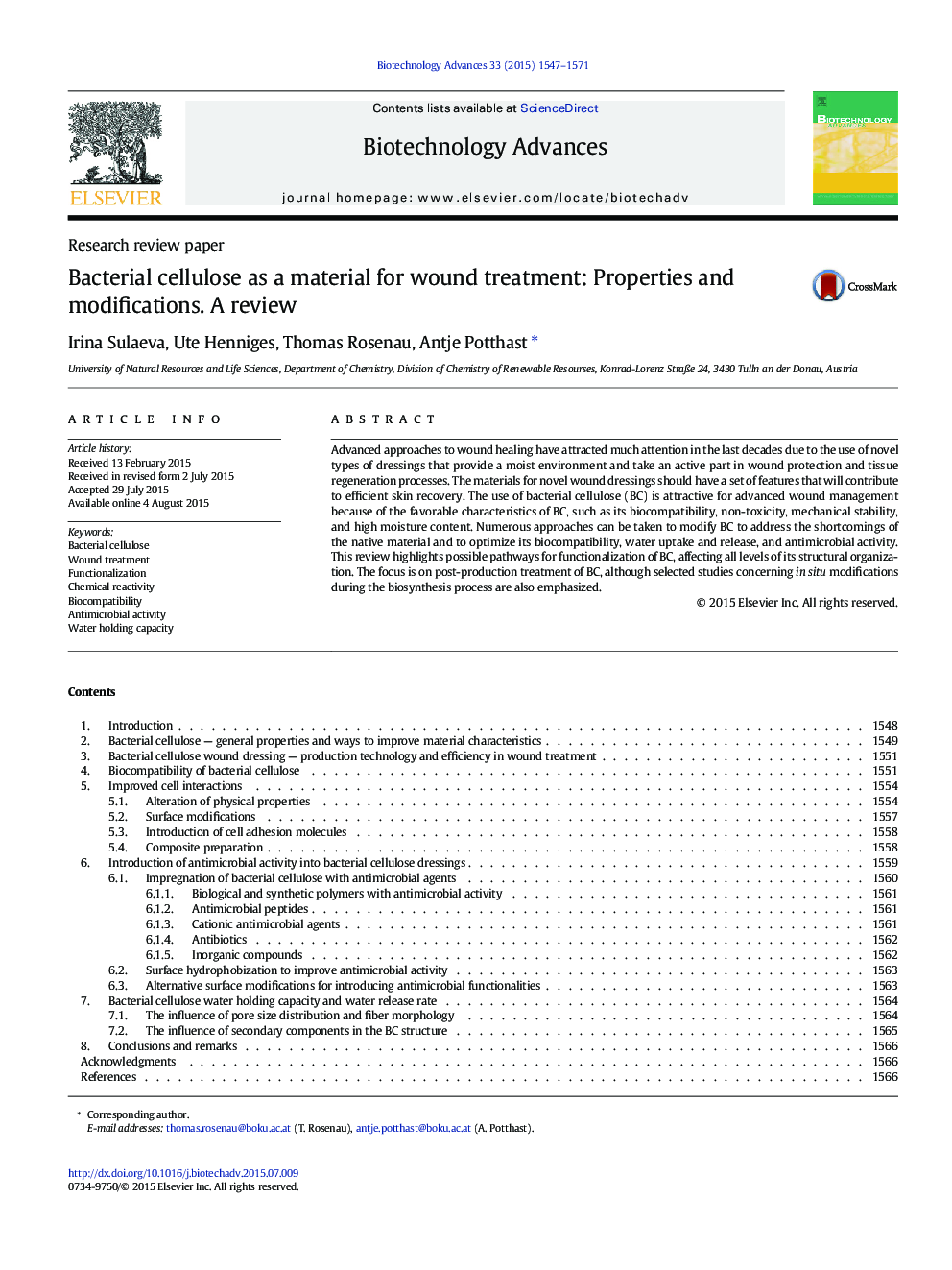| Article ID | Journal | Published Year | Pages | File Type |
|---|---|---|---|---|
| 10231387 | Biotechnology Advances | 2015 | 25 Pages |
Abstract
Advanced approaches to wound healing have attracted much attention in the last decades due to the use of novel types of dressings that provide a moist environment and take an active part in wound protection and tissue regeneration processes. The materials for novel wound dressings should have a set of features that will contribute to efficient skin recovery. The use of bacterial cellulose (BC) is attractive for advanced wound management because of the favorable characteristics of BC, such as its biocompatibility, non-toxicity, mechanical stability, and high moisture content. Numerous approaches can be taken to modify BC to address the shortcomings of the native material and to optimize its biocompatibility, water uptake and release, and antimicrobial activity. This review highlights possible pathways for functionalization of BC, affecting all levels of its structural organization. The focus is on post-production treatment of BC, although selected studies concerning in situ modifications during the biosynthesis process are also emphasized.
Keywords
Related Topics
Physical Sciences and Engineering
Chemical Engineering
Bioengineering
Authors
Irina Sulaeva, Ute Henniges, Thomas Rosenau, Antje Potthast,
